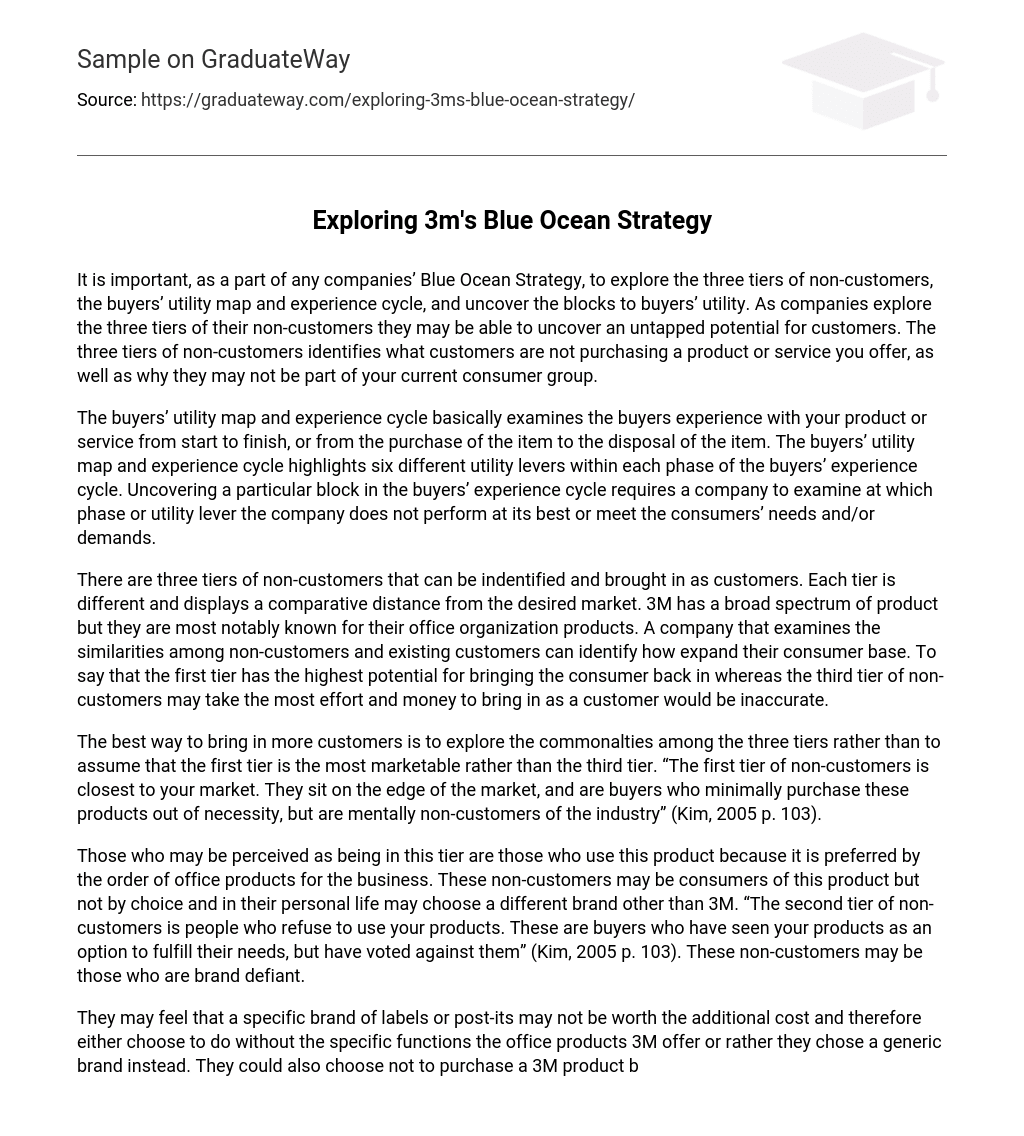In order to implement a successful Blue Ocean Strategy, companies must investigate three tiers of non-customers and analyze the buyers’ utility map and experience cycle. By doing so, they can identify the barriers to buyers’ utility and potentially discover untapped customer potential. The three tiers of non-customers clarify which customers are not purchasing the company’s products or services and provide insights into why they are not currently part of the consumer group.
The buyers’ utility map and experience cycle analyzes the buyers’ experience with the product or service, spanning from the purchase to the disposal of the item. This map identifies six utility levers that influence the buyers’ experience at each phase. To identify any obstacles in the buyers’ experience cycle, a company must evaluate in which phase or utility lever it fails to meet consumer needs and demands effectively.
Identifying and converting non-customers into customers can be achieved by recognizing three distinct tiers, each with varying degrees of separation from the target market. While 3M is renowned for its office organization products among its extensive range, a company can expand its customer base by analyzing commonalities between existing customers and non-customers. It would be inaccurate to assume that the first tier holds the greatest potential for customer conversion; instead, attracting the third tier may require additional resources and effort.
Instead of assuming that the first tier is more attractive than the third tier, the best way to attract more customers is to find commonalities among all three tiers. According to Kim (2005, p. 103), “The first tier of non-customers is closest to your market. They sit on the edge of the market, and are buyers who minimally purchase these products out of necessity, but are mentally non-customers of the industry.”
Individuals in this tier use this product as their preferred choice for office products in their business, even though they may not choose this brand for personal use. According to Kim (2005 p. 103), the second tier of non-customers comprises people who have rejected your products as an option to meet their needs, possibly due to being brand defiant.
There are individuals who may believe that a certain brand of labels or post-its is not worth the extra cost. As a result, they may choose to forgo the specific functions offered by 3M office products or opt for a generic brand instead. Additionally, some people may decide not to purchase a 3M product because they perceive it as too expensive for a branded item; however, they may be unaware of the affordability of 3M’s product line. According to Kim (2005 p.03), there is also another group of non-customers who have never considered your products as an option. These non-customers could include individuals who are simply unaware of the functionality of the available 3M products or those who have never had the purchasing power to choose these products before, such as young adults entering a career field, new college students, or someone new to purchasing office supplies for their business.
All three tiers of non-customers within the 3M brand share an important commonality: 3M’s product marketing should focus more on highlighting the benefits of their products. The buyer utility and experience cycle for 3M is relatively user-friendly and simple, making it appealing to a wide demographic.
“Buyer Utility Map is a tool that allows managers to evaluate whether their business or product/service provides significant value to buyers and identifies any potential obstacles to buyer utility throughout the entire buying experience” (Kim 2011). Figure 1-1 illustrates the various areas where 3M currently sells and offers products to customers, as well as the potential Blue Ocean for 3M. Using the buyer utility map, managers can: 1) gain initial insights into underlying assumptions within their industry that may decrease value and can be reversed; 2) test the exceptional utility of their offering by determining if their business or product/service eliminates the major barriers to utility throughout the entire experience cycle; 3) discover assumptions that increase costs without significantly enhancing buyer utility” (Kim 2011). 3M products are accompanied by user-friendly instructions and encompass a range of options, including both innovative and enjoyable products for personal use, as well as simple and professional products for a clean appearance. Furthermore, 3M promotes the use of recycled products and encourages recycling. Purchasing their products is convenient, with options available at office supply stores or retail giants such as Wal-Mart or Target. Locating a 3M product does not require much effort.
The maintenance aspect of 3M’s products can hinder buyer utility. While some products are disposable, 3M also provides refillable and reusable options. However, due to the extensive range of products available, it may be inconvenient to constantly refill or replenish certain items. Additionally, there is a risk of ordering or buying the wrong size when restocking or refilling reusable products.





